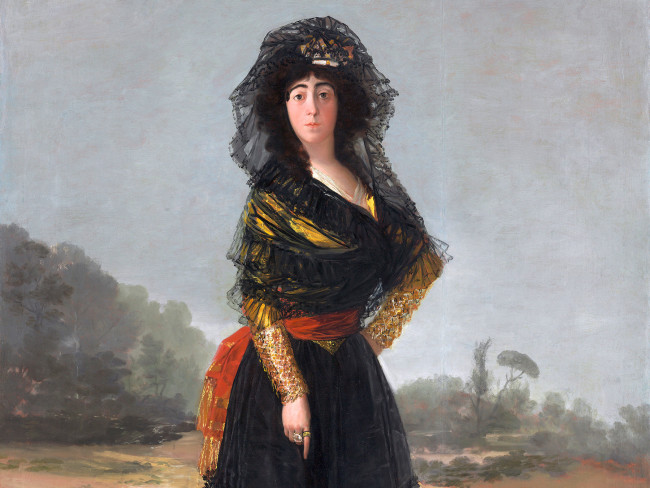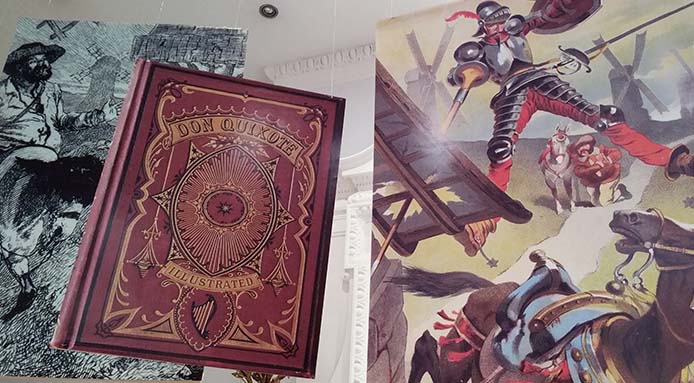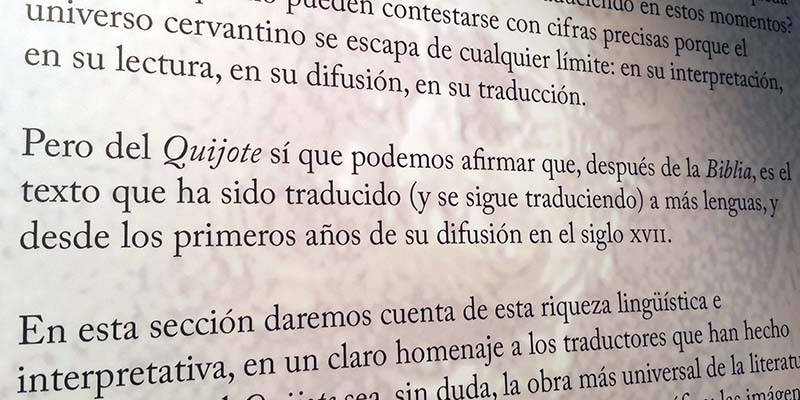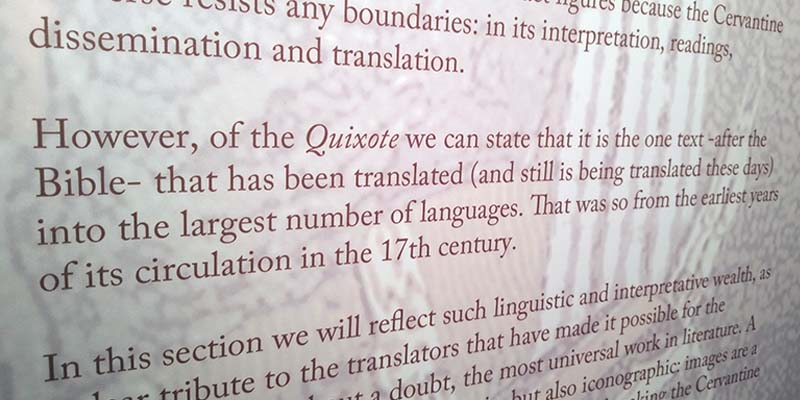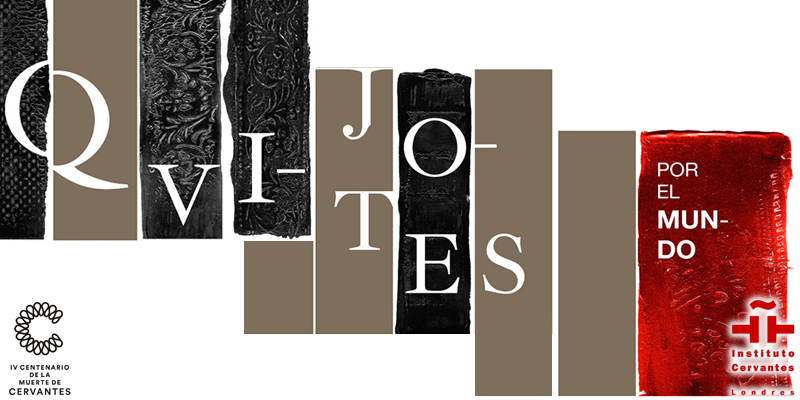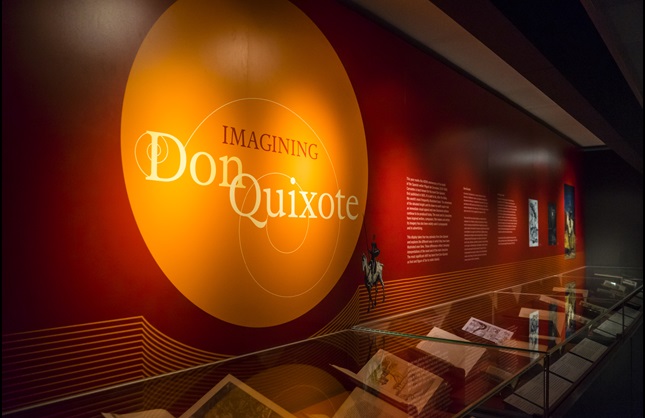Spain and the Hispanic World at the Royal Academy of Arts
From masterpieces by Goya and Velázquez to dazzling objects from Latin America, explore the art and culture of the Hispanic world in this landmark exhibition.
Discover the rich story of Spanish and Hispanic art and culture from the ancient world to the early 20th century through over 150 fascinating works: from masterpieces by El Greco, Zurbarán, Velázquez and Goya to sculptures, paintings, silk textiles, ceramics, lustreware, silverwork, precious jewellery, maps, drawings, illuminated manuscripts and stunning decorative lacquerware from Latin America.
The exhibition features the famous World Map of 1526 by Giovanni Vespucci, and culminates with Sorolla’s colourful, large-scale study for his monumental series of 14 paintings, Vision of Spain.
Founded in New York in 1904, the Hispanic Society Museum & Library is home to the most extensive collection of Spanish art outside of Spain. Presented for the first time in the UK, it will offer visitors a chance to trace the great diversity of cultures and religions – from Celtic to Islamic, Jewish and Christian – that have shaped and enriched what we today understand as Spanish culture.
21 January — 10 April 2023
Tues–Sun: 10am–6pm
Fri: 10am–9pm
Main Galleries, Burlington House, Royal Academy of Arts
An exhibition honouring Chaves Nogales opens in Newcastle
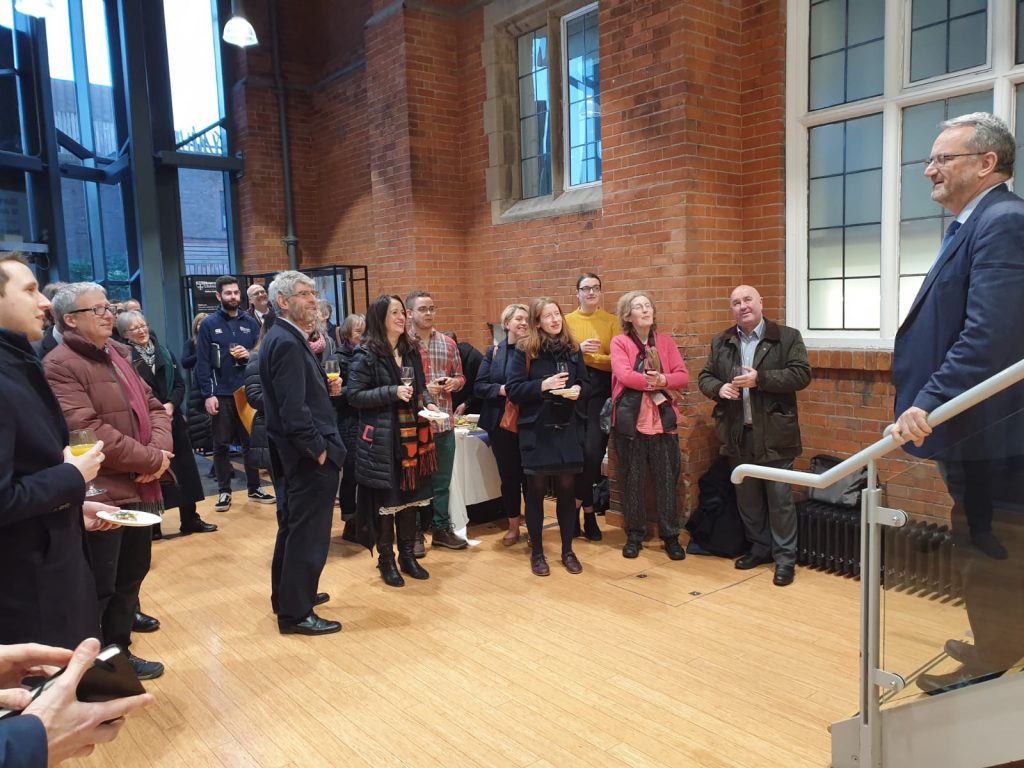
The exhibition ‘Europe at War: Chaves Nogales – Spanish journalist and exile 1917 – 1944’ is on display at Newcastle University’s Long Gallery, until the February 21st . It has been organised by staff at Newcastle University with colleagues from the University of Seville, and with the support of Instituto Cervantes Londres.
The exhibition was officially opened by one of Chaves Nogales’s grandchildren, Antony Jones, and Juan Belmonte’s great-granddaughter, Tatiana Beca Osborne. It was also attended by Director of Instituto Cervantes in London, Ignacio Peyró, and representatives from the University of Seville, such as Director of Culture and Heritage at the University of Seville, Luis Rafael Méndez Rodríguez.
The exhibition includes an original copy of one of Chaves Nogales’ articles for the North Mail and other examples of his writing. As well as paying homage to Chaves Nogales and the memory of other exiles in Britain, it also remembers the significant number of men and women from the North East who travelled to Spain in the 1930s to fight against General Franco’s forces.

Chaves Nogales, a renowned Spanish journalist
Manuel Chaves Nogales was a Spanish journalist renowned for refusing to take an extreme ideological position and who warned against the growth of fascism across Europe. He travelled extensively through Europe and was one of the first foreign correspondents to witness and report on events taking place in Russia in the immediate aftermath of the 1917 revolution, pioneering a new style of journalism that was more similar to feature-based, in-depth journalism.
In 1930, Chaves Nogales became editor of the influential and ideologically moderate newspaper, Ahora. Although he nominally supported the Republic against the military uprising of General Franco in 1936, his overriding commitment was to report the truth of what was unfolding across Europe and became part of the so-called ‘Third Spain’ affiliated to neither far right nor far left. As a result, he was regarded as one of the most incisive and unbiased journalists working in Europe.
Last November, Instituto Cervantes in London paid tribute to the memory of all Spanish exiles at the grave of Chaves Nogales. The tribute took place in the North Sheen Cemetery in London and was chaired by the ambassador of Spain to the United Kingdom, Carlos Bastarreche.
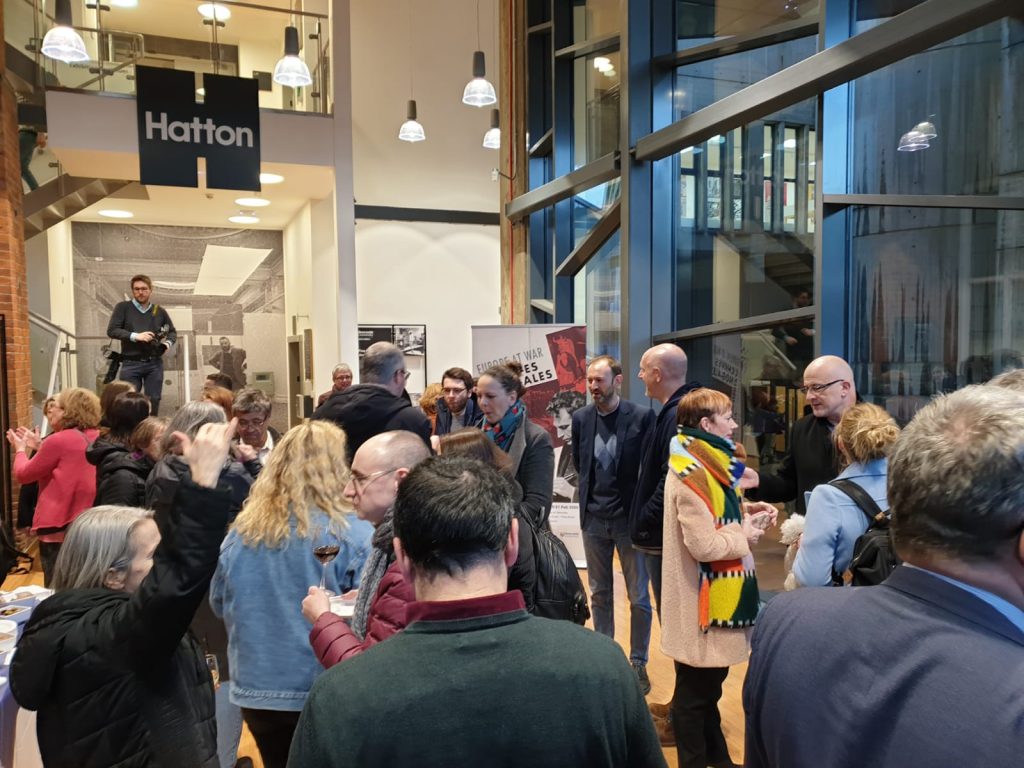
Inaugurada una exposición en honor a Chaves Nogales en Newcastle

La exposición ‘Europa en guerra: Chaves Nogales – periodista español y exilio 1917 – 1944″ se exhibe’ fue inaugurada en la galería Long de la Universidad de Newcastle y estará abierta al público hasta el próximo 21 de febrero. Ha sido organizada por el personal de la Universidad de Newcastle, junto con el de la Universidad de Sevilla y con el apoyo del Instituto Cervantes de Londres.
Inaugurada por uno de los nietos de Chaves Nogales, Antony Jones, y la bisnieta de Juan Belmonte, Tatiana Beca Osborne, a ella también asistieron el director del Instituto Cervantes de Londres, Ignacio Peyró, y representantes de la Universidad de Sevilla, como el Director de Cultura y Patrimonio de la Universidad de Sevilla, Luis Rafael Méndez Rodríguez.
La exposición incluye una copia original de uno de los artículos de Chaves Nogales para North Mail y otros ejemplos de sus escritos. Además de rendir homenaje a Chaves Nogales y el recuerdo de otros exiliados en Reino Unido, también recuerda a la cantidad de hombres y mujeres del noreste que viajaron a España en la década de 1930 para luchar contra Franco.

Chaves Nogales, un reconocido periodista español.
Manuel Chaves Nogales fue un periodista español reconocido por negarse a tomar una posición ideológica extrema y que advirtió contra el crecimiento del fascismo en toda Europa. Viajó extensamente por Europa y fue uno de los primeros corresponsales extranjeros en presenciar e informar sobre los eventos que tuvieron lugar en Rusia inmediatamente después de la revolución de 1917, siendo pionero en un nuevo estilo de periodismo que era más similar al periodismo en profundidad.
En 1930, Chaves Nogales se convirtió en director del influyente e ideológicamente moderado periódico Ahora. Aunque apoyó a la República contra el levantamiento militar de Franco en 1936, su principal compromiso fue informar de lo que se estaba ocurriendo en Europa y se convirtió en parte de la llamada ‘Tercera España’, sin afiliarse a la extrema derecha ni la extrema izquierda . Como resultado, fue considerado como uno de los periodistas más incisivos e imparciales que trabajaron en Europa.

El pasado mes de noviembre, el Instituto Cervantes de Londres rindió homenaje a la memoria de todos los exiliados españoles en la tumba de Chaves Nogales. Tuvo lugar en el Cementerio North Sheen de Londres y fue presidido por el embajador de España en el Reino Unido, Carlos Bastarreche.
Conferencia inaugural de «Quijotes por el mundo» / Don Quixotes Around The World Opening Lecture
El ministro de España en el Reino Unido, Federico Trillo, la directora de Cultura del Instituto Cervantes, Beatriz Hernanz, el comisionado de la exposición «Quijotes por el mundo», el cervantista y catedrático José Manuel Lucía Megías, y el más conocido traductor contemporáneo del Quijote de Cervantes al inglés, John Rutherford, han inaugurado la exposición «Quijotes por el mundo» compartiendo su experiencia personal con el mundo de Don Quijote de la Mancha y analizando la aportación de Cervantes a la literatura mundial a través de su obra maestra.
«Quijotes por el mundo» es un tributo a Miguel de Cervantes en el IV centenario de su muerte y un reconocimiento a todos los traductores que han contribuido a que, con 172 variantes dialectales de 147 lenguas distintas, «El ingenioso hidalgo don Quijote de la Mancha» sea la obra más traducida del mundo después de la Biblia.
_________________________________________________________________
_________________________________________________________________
Spanish Ambassador in the United Kingdom Federico Trillo, the Head of Culture of the Instituto Cervantes Beatriz Hernanz, the comissioner of the Don Quixote Around The World exhibition Jose Manuel Lucia Megias, and the most well-known contemporary translator of Don Quixote into English Prof. John Rutherford, opened the Don Quixotes Around The World exhibition to the public by sharing their personal experiences with Don Quixote and commenting on Cervantes’s contribution to worldwide literature through it.
Quixotes Around The World is a tribute to Miguel de Cervantes on the IV centenary of his death and a global recognition of all the translators who, having translated Cervantes’s masterpiece into 147 different languages and 172 dialectal variations thereof, have contributed to turning The Ingenious Gentleman Don Quixote Of La Mancha into the second most translated book in the world after the Bible.
«Quijotes por el mundo», el alcance del Quijote de Cervantes / Don Quixotes Around The World, The Scope Of Cervantes’s Masterpiece
En el marco del IV centenario de la muerte del autor hispano más universal, Miguel de Cervantes, en el Instituto Cervantes de Londres hemos inaugurado «Quijotes por el mundo» (exposición comisionada por el catedrático y cervantista José Manuel Lucía Megías), un reconocimiento del alcance de la obra de Cervantes y, a su vez, un tributo a los muchísimos traductores que, desde el sXVII y hasta la actualidad, han invertido su tiempo en hacerla crecer hasta convertirla en un fenómeno cultural global. Mientras estás leyendo estas líneas, alguien en alguna parte del mundo está traduciendo un fragmento de la obra más conocida de Cervantes.
Tras años de investigación y recopilación documental, se ha podido constatar que «El ingenioso hidalgo Don Quijote de la Mancha» de Miguel de Cervantes existe en 172 variedades lingüísticas de 147 lenguas: esta cifra la convierte oficialmente en la obra más traducida del mundo después de la Biblia.
Durante la investigación, se ha observado también que cada traducción e ilustración a lo largo de la historia ha adaptado el personaje del Quijote, su vocabulario, aspecto e indumentaria, al contexto histórico y social del entorno en que se hablaba dicha lengua, hasta hacer universales los valores y lecciones impartidas -y aprendidas- por el particular caballero. En 1863, fue Gustave Doré quien unificara la imagen y figura de Don Quijote, ilustrando y dando así vida al flaco hidalgo y su rechoncho escudero Sancho Panza que conocemos en la actualidad.
Niños, jóvenes y adultos de todo el mundo, durante 400 años, han transcrito, traducido, ilustrado e interpretado en pantalla al Quijote. Ven a ver una muestra de algunas de esas interpretaciones, leer el Quijote en braille y escuchar lecturas de fragmentos de «El ingenioso hidalgo Don Quijote de la Mancha» en otros idiomas: la entrada es libre y la exposición estará abierta en nuestro auditorio hasta el 10 de junio 2016.
Así es «Quijotes por el mundo»:
_____________________________________________________________________________
_____________________________________________________________________________
_____________________________________________________________________________
To mark the IV centenary of the passing of the most universal Hispanic author, Miguel de Cervantes, at the Instituto Cervantes in London we launched the exhibition Don Quixotes Around The World (commissioned by prof. Jose Manuel Lucia Megias, lecturer and Cervantes specialist), with the aim of illustrating the span of Miguel de Cervantes’s most renowned work and paying homage to all those translators involved in its growth over time. As you read these lines, someone, somewhere in the world is working on a translation of an excerpt of Cervantes’s stellar piece of writing.
After a lengthy focus on the compilation of worldwide takes on this book, it has been ascertained that The Ingenious Gentleman Don Quixote Of La Mancha by Miguel de Cervantes has been translated to 172 dialectal varieties of 147 different languages, thus officially becoming the second most translated book in the world after the Bible.
Research also showed that past translations and illustrations of Don Quixote had adapted its main characters’ clothes, vocabulary and overall looks to the historical and social context of the region where the target language was spoken at the time. The hundreds of translators and illustrators of Cervantes’s work throughout history have helped make Don Quixote’s values and lessons universal. It was Gustave Doré who unified the aspect of the book’s characters in 1863, thus creating the slim gentleman Don Quixote and his chubby squire Sancho Panza, nowadays adopted worldwide.
For 400 years, children, teenagers and adults the world over have transcribed, translated, drawn and played Don Quixote on screen. Come watch samples of some of those interpretations, read don Quixote in braille and hear excerpts of The Ingenious Gentleman Don Quixote Of La Mancha read in other languages: admission is free and the exhibition is open at our centre until 10 June 2016.
Here is what you will find at Don Quixotes Around The World (introduction in Spanish):
EXPOSICIÓN: QUIJOTES POR EL MUNDO / EXHIBITION: DON QUIXOTES AROUND THE WORLD
Del 14 de abril al 10 de junio de 2016 – L-V: 10.00h – 18.00h – S: 10.00h – 16.00h
Inauguración: 13/04/2016 – 18:30h
Reservas: bit.ly/quijotes_iclondon
Con la intervención del comisario de la muestra Prof. Manuel Lucía Megías (Madrid) y el Prof. John Rutherford (Oxford), hispanista y traductor del Quijote.
Quijotes por el mundo muestra a un tiempo la riqueza bibliográfica de la red de bibliotecas del Instituto Cervantes y rinde homenaje a cientos de traductores de la obra cervantina que, a lo largo de 400 años, han hecho posible que Cervantes y sus textos se hayan difundido por todo el planeta. El Quijote es, como se suele repetir, la obra más traducida después de la Biblia.
¿Por qué lenguas y culturas tan diversas se han acercado a la obra cervantina, a las aventuras escritas por Cervantes a principios del siglo XVII y protagonizadas por don Quijote y Sancho Panza? ¿En qué momento y por qué circunstancias se impulsó la traducción del Quijote en una determinada lengua? ¿Cuál fue el texto y la lengua de origen de muchas de las traducciones? A estas y otras tantas preguntas se da respuesta en la exposición, que se completa con traducciones iconográficas, cinematográficas, adaptaciones infantiles y juveniles, sin olvidarnos de la voz de lectores de la obra cervantina en 30 lenguas diferentes. Quijotes por el mundo muestra la pervivencia del Quijote, cuatrocientos años después de la muerte de Miguel de Cervantes. Pervivencia de las aventuras narradas y de los valores «quijotescos» en ellas contenidas, que se han traducido y se siguen traduciendo en la actualidad. ¿Qué nueva traducción se estará completando, ahora, mientras se muestra esta exposición? El tiempo nos lo dirá. Ahora es el momento de disfrutar y de asombrarse de tanta riqueza, de tanta variedad lingüística como la que ha suscitado el Quijote en sus cuatrocientos años de andanzas y éxito.
Esta muestra ha sido comisariada por José Manuel Lucía Megías y sus fondos proceden exclusivamente de toda la red de las 60 bibliotecas del Instituto Cervantes.
Actividad celebrada con motivo del IV Centenario de la muerte de Cervantes: http://400cervantes.es
_________________________________________________________________
14 April through 10 June 2016 – Mon to Fri: from 10.00am to 6.00pm – Sat: from 10.00am to 4.00pm
Opening: 13/04/2016 – 6.30pm
RSVP: bit.ly/quijotes_iclondon
With the participation of the curator Prof. Manuel Lucía Megías (Madrid) and Prof. John Rutherford (Oxford), hispanist and translator of Don Quixote.
Instituto Cervantes – Sala de exposiciones, 102 Eaton Square, Londres SW1W 9AN
Quijotes por el mundo (Don Quixotes around the world) shows the rich holdings of the Instituto Cervantes’s network of libraries and, at the same time, pays tribute to the hundreds of translators of Cervantes’s work who, over a period of 400 years, have made it possible to disseminate Cervantes and his texts worldwide.
Don Quixote, as is often repeated, is the most widely translated work after the Bible. Why have such diverse languages and cultures embraced Cervantes’s work, the adventures of Don Quixote and Sancho Panza written by Cervantes in the early seventeenth century? At what moment and in what circumstances was impetus given to translating Don Quixote into a particular language? What was the text and language of origin of many of the translations? These and other questions are answered in the exhibition, which also features iconographic and film translations and adaptations for children and young readers, as well as representing the voice of the work’s readers in 30 different languages. Quijotes por el mundo shows that Don Quixote lingers on 400 years after the publication of the second part in Madrid in the autumn of 1615. The adventures it tells of and the ‘Quixotesque’ values they contain continue to be translated to this day. What new translation is being completed now, as this exhibition opens? Only time will tell. Now is the time to enjoy and be amazed at the richness and the linguistic variety of Don Quixote throughout its 400 years of history and success.
RSVP: bit.ly/quijotes_iclondon
Event held on the occasion of the fourth centenary of the death of Cervantes: http://400cervantes.es/en
Exhibición de ilustraciones del Quijote / Exhibition: Illustrations Of Don Quixote
Así hemos celebrado el Día E 2015 – This is how we celebrated Día E 2015
El Día E, la fiesta de todos los que hablamos español (este año celebrada el sábado 20 de junio), ha unido a todos los centros Cervantes del mundo en la labor de dar a conocer la belleza del idioma español y demostrar el crecimiento personal y profesional que acarrea su dominio. Lo hemos celebrado con descuentos y concursos, actuaciones en vivo, tests de nivel gratuitos y mucha, mucha diversión. Aquí un video-resumen del Día E en nuestro centro de Londres:
_____________________________________
The Día E, celebration day for all those who speak Spanish, took place on 20 June this year. Instituto Cervantes centres of the world came together to show the beauty of the Spanish language and give first-hand evidence of the personal and professional development that learning Spanish entails. We celebrated with discounts and draws, live performances, free Spanish level tests and much fun. Here is a video-summary of Día E at our London centre:
Día E, la fiesta de todos los que hablamos español – Día E, celebration day for all those who speak Spanish
Hoy es el día de todos los hispanohablantes del mundo, lo hayamos aprendido en casa o en una escuela de idiomas. No importan los orígenes, hoy solo importa el medio de comunicación que nos une; el español, la lengua hablada por 548 millones de personas en nuestro planeta.
¡Celebra esta cifra con nosotros! Ven a visitarnos a lo largo del día a 102 Eaton Square, London SW1W 9AN, aprovecha los descuentos especiales en cursos de español, válidos solamente hoy, y participa en cualquiera de los eventos de abajo, incluyendo numerosos sorteos y regalos (para algunos eventos es necesario el registro previo; programa completo y detalles aquí).
_______________________________________
Today is the day of all Spanish speakers worldwide, whether it was learned at home or in a language academy. Roots are unimportant – today, it is all about the means of communication that holds us together; Spanish, the language spoken by as many as 548 million people in the world.
Celebrate this ever-growing figure with us! Come visit us at 102 Eaton Square, London SW1W 9AN during the day, take advantage of the special enrolment discounts available only today, and take part in any of the events below, including numerous contests and gifts (some events require registering in advance; full programme and details are available here).
The Waiting Room: Spanish Exile in the United Kingdom – The Waiting Room: el exilio español en el Reino Unido
The Waiting Room es una exposición sobre la realidad de la posguerra civil española en los ojos de los exiliados en el Reino Unido entre 1940 y 1978. Entre ellos hubo varias figuras literarias, que inmortalizaron el sentimiento de una nación; una nación alejada de su patria, que vivió esta época con los ojos puestos en el calendario.
The Waiting Room es un proyecto de IC Communication en colaboración con el Instituto Cervantes. Además de la exposición de material literario y fotográfico, hay varias actuaciones en el marco de The WaitingRoom, que ayudan a contextualizar el momento histórico del país y su significado en la actualidad. Las fechas y horarios se pueden consultar en el programa de actividades culturales de junio.
La exposición está abierta al público en nuestro centro (102 Eaton Square, London SW1W 9AN) hasta el 30 de junio de 2015.
___________________________________________________
The WaitingRoom is an exhibition about the Spanish Civil War aftermath through the eyes of those exiled in the United Kingdom between 1940 and 1978. Among them, there were several literary figures, who captured the feeling of a nation; a nation far from its roots, that spend the better part of this era looking at the calendar.
The Waiting Room is a project by IC Communication in collaboration with Instituto Cervantes. In addition to the exhibition of literary and photographic material, there are several events on the topic of The Waiting Room, which help put this historic event and its current meaning into context. Dates and times can be found in our June cultural programme.
The exhibition is open to the public at our centre (102 Eaton Square, London SW1W 9AN) until 30 June 2015.
